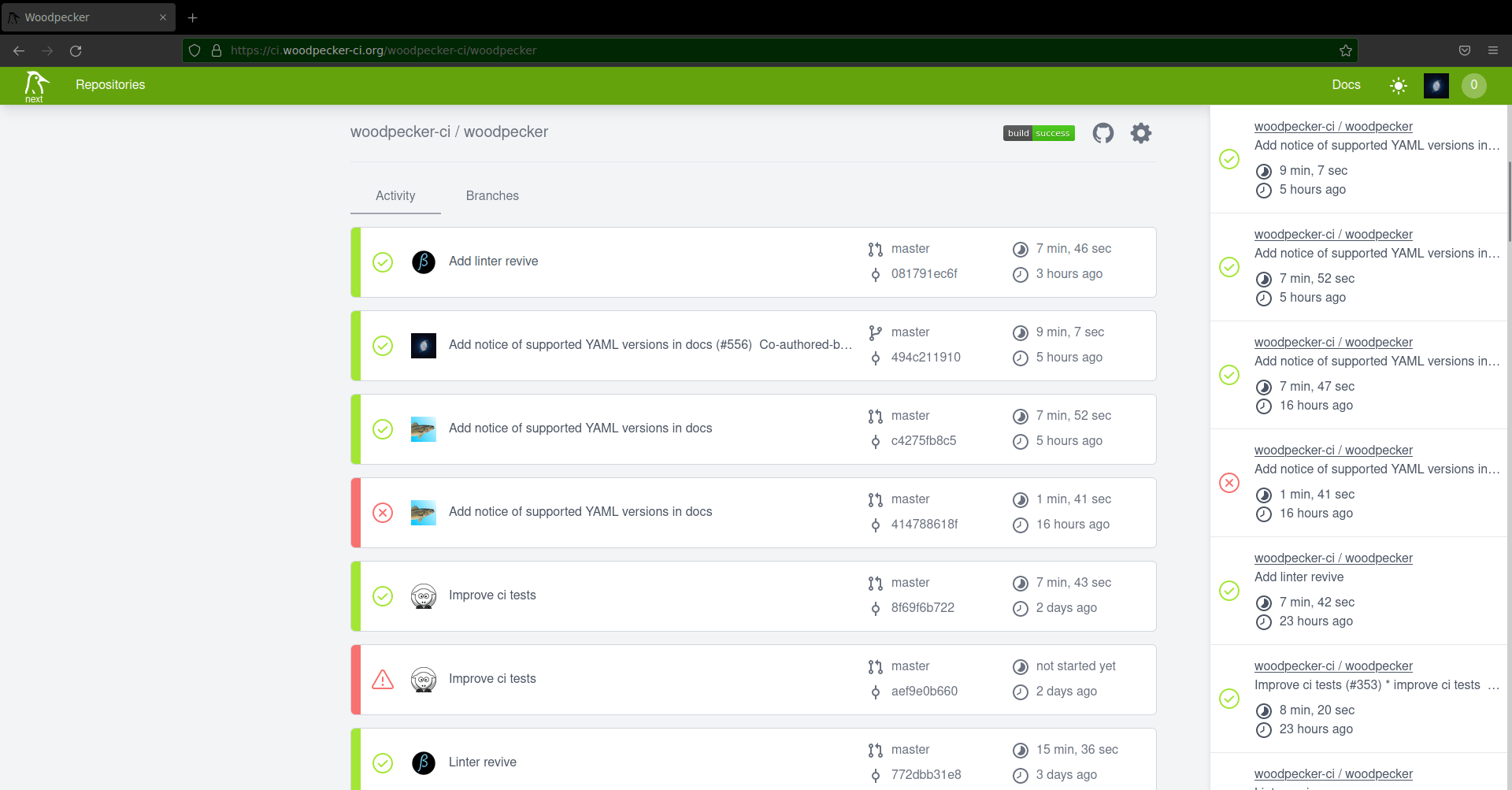Welcome to Woodpecker
Woodpecker is a simple yet powerful CI/CD engine with great extensibility. It focuses on executing pipelines inside containers. If you are already using containers in your daily workflow, you'll for sure love Woodpecker.

.woodpecker.yaml
- Place your pipeline in a file named
.woodpecker.yamlin your repository - Pipeline steps can be named as you like
- Run any command in the commands section
.woodpecker.yaml
steps:
- name: build
image: debian
commands:
- echo "This is the build step"
- name: a-test-step
image: debian
commands:
- echo "Testing.."
Steps are containers
- Define any container image as context
- either use your own and install the needed tools in a custom image
- or search for available images that are already tailored for your needs in image registries like Docker Hub
- List the commands that should be executed in the container
steps:
- name: build
- image: debian
+ image: mycompany/image-with-awscli
commands:
- aws help
File changes are incremental
- Woodpecker clones the source code in the beginning
- File changes are persisted throughout individual steps as the same volume is being mounted in all steps
.woodpecker.yaml
steps:
- name: build
image: debian
commands:
- touch myfile
- name: a-test-step
image: debian
commands:
- cat myfile
Plugins are straightforward
- If you copy the same shell script from project to project
- Pack it into a plugin instead
- And make the yaml declarative
- Plugins are Docker images with your script as an entrypoint
Dockerfile
FROM laszlocloud/kubectl
COPY deploy /usr/local/deploy
ENTRYPOINT ["/usr/local/deploy"]
deploy
kubectl apply -f $PLUGIN_TEMPLATE
.woodpecker.yaml
steps:
deploy-to-k8s:
image: laszlocloud/my-k8s-plugin
settings:
template: config/k8s/service.yaml
See plugin docs.